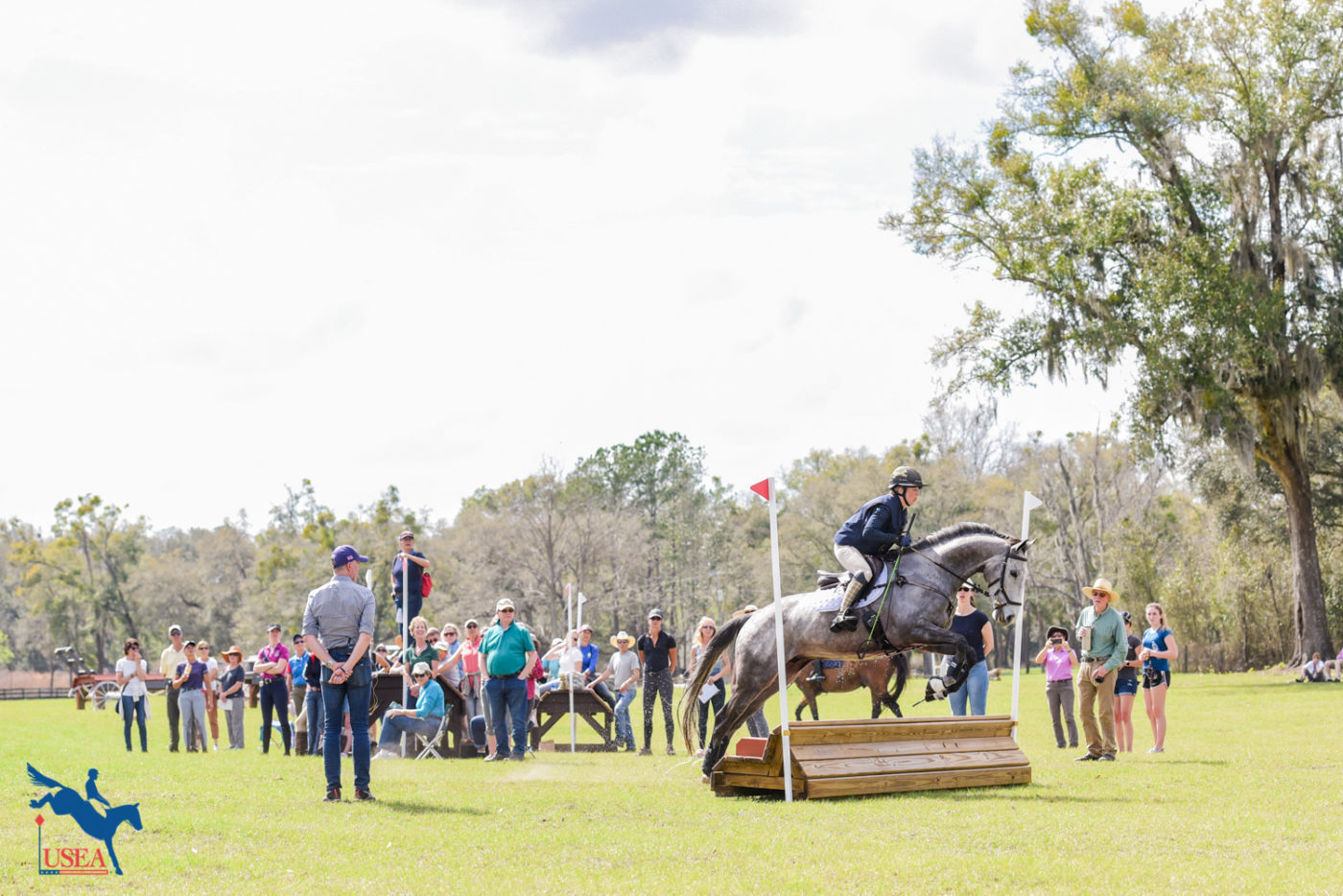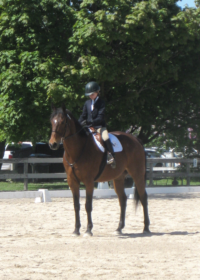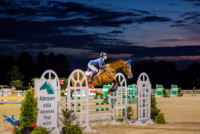Renew Your USEA Membership for the 2023 Season Today LEARN MORE

Trainers, riders, parents, and more are in for a real treat when the all-new USEA Eventing Handbook by the Levels is officially released. Those participating in the 2022 USEA Instructors’ Certification Program (ICP) Symposium at Barnstaple South Farm in Ocala, Florida on February 8-9 will be the first to set eyes on this all-encompassing guide that has been two years in the making. Access the first preview of the USEA Eventing Handbook by the Levels here.
The USEA Eventing Handbook by the Levels has a breakdown of each competition level complete with an overview that includes the purpose of the level, rider expectations, and instruction requirements. To help you better understand the wealth of information that this guidebook will offer, we are sharing never-before-seen excerpts from the USEA Eventing Handbook by the Levels. Check out excerpts from the Starter and Advanced levels below:
Starter Level Purpose
The Starter Level provides a welcoming, introductory educational experience to the three phases of eventing. This level is designed for 1) Lower-level riders who are new to the sport and have the basic skills necessary for the three phases of eventing, 2) Riders with some experience who want to compete at a level with lower requirements, or 3) Green or inexperienced horses and ponies that are sufficiently prepared for the introduction to the three phases of eventing.
The Starter Level is a test, not a recognized USEA level. As such, there may be local variations in the specifications. The following should be considered approximate expectations for competitions:
Starter Level Rider Expectations Overview
Riders at the Starter Level must be able to control and direct their horse at walk,

trot, canter, safely, in A) The dressage arena, B) The cross-country phase and show jumping phases in an enclosed arena and out in the open, C) In the warm-up areas for each phase of the competition.
They should focus on developing a low center of gravity and a strong lower leg position in all three gaits, as the foundation of independent core strength, stability, and balance. They should perform calm transitions between the gaits. The rider should have knowledge of what “contact with the horse’s mouth” means and be working towards elastic and consistent contact as their balance and stability permits. They must be able to control the speed and direction of the horse, in the open and in a group setting.
Riders are expected to know the rules and protocol for this level of competition and must perform the requirements of each phase from memory without the unauthorized assistance or coaching from any person while competing.
It is the Rider’s responsibility to ascertain that they understand the principles, concepts, language, and definitions contained in the “Universal Overview” chapter of this document.
Instructor Requirement Overview
Instructors must be able to lay the foundation for a strong and effective basic position for riding in all three phases, based on a secure base of support and an independent seat, by emphasizing a correct lower leg position, developing a low center of gravity, and staying centered over the horse in three gaits. Elements of a low center of gravity include a draped leg with a supple and flexible ankle to allow the heel to sink below the toe, which does not pinch or grip at the knee. They must also teach an equally strong and effective position for jumping, based on a secure leg position with a weighted heel which enables the rider to balance over the stirrup irons.
The instructor should employ the foundational elements of the Training Scale, rhythm, and tempo, as the underlying theme in all their teaching and training at this level. Simultaneously, the instructor must introduce riders to the “why” of doing things as well as the “how”, by incorporating the biomechanics of the horse and the way horses think and react into their teaching and explanation.
Instructors should introduce riders to the language of the sport with clear definitions for all terms used in their instruction. They should be producing riders and horses who will be safe and successful in any number of first-time activities including but not limited to: First competition, first cross-country course, first warm-up arena, first course walk, first formal dressage test, riding in a group and leaving a group.
The instructor should ensure that the riders and horses have the proper equipment, that riders have been introduced to basic rules and procedures, and that they know how to manage the preparation and care of their horses before, during and after the event. They should be presenting riders with experiences that prepare them for their first competition and must be prepared and willing to guide the rider through all aspects of the competition process. They must ensure that their students are mounted on horses suitable for their skill set and that the horse can perform at the specified level. Instructors should know, understand, and effectively teach their students all USEF rules applicable to the level.
It is the instructor's responsibility to maintain safe progression for learning and for moving up the levels by ensuring:
Advanced Level Purpose

The Advanced Level is the highest national level of Horse Trials. It offers tests of significant difficulty designed to prepare competitors and horses for either Four- or Five-Star Events. The requirements for Advanced Level competition represent the culmination of all knowledge and experience earned through the progression through the levels. Open to competitors from the beginning of the calendar year of their 18th birthday, on horses six years of age or older. Both the competitor and the horse must have obtained the required MERs.
Advanced Specifications for Competition (for complete specifications refer to the USEF Rules For Eventing):
Show Jumping
Cross-Country
Advanced Level Rider Expectations Overview
Riders at the Advanced Level should be able to successfully execute all expectations of the Starter through Intermediate Level Requirements. Advanced Level Riders should have a sophistication of riding skills and a comprehension of horse training and management which only result from years of progression, training, success, and cumulative experience at the previous levels. They should ride on an instinctive level rather than just a technical level. The Advanced level rider should have a highly developed sense of feel that allows the rider to feel how the horse is performing and reacting to the aids and instantaneously react accordingly. They should be able to feel or sense when a problem is ‘about’ to happen and be able to prevent it before it occurs. At this level the rider should have developed a rapport with the horse in all three phases. The level of communication between the horse and rider should be refined and instinctive, so that a true partnership is formed. At the Advanced Level, the rider is the trainer.
Advanced level riders should have had significant exposure over many years to high quality instruction and coaching for the sport of eventing, as well as mentors in all aspects of training and horsemanship. Advanced level riders should continue to surround themselves with qualified professional eyes on the ground as a regular part of their training program. The higher degree of technical and physical difficulty expected at the Advanced level must be reserved only for horses and riders who are both capable and properly prepared physically and mentally. All aspects of horse health and management must be directly overseen by the rider at this level. Advanced riders should know how to identify potential health and soundness issues, adjust their program accordingly, and should assess and minimize the risk of injury to their horse in every aspect of their management program. The rider should assemble a team of professionals, including veterinarians, grooms, farriers, therapy providers, instructors, coaches, and mentors who have the knowledge and experience required to produce and maintain equine athletes at this level. Riders must have complete knowledge and understanding of all USEF rules governing participation in competition at the Advanced Level, and FEI rules governing CCI4* and CCI5* competitions as appropriate.
It is the Rider’s responsibility to:
Instructor Requirement Overview
Instructors should confirm that the rider has the skill, ability, knowledge, support, dedication, experience, mental fortitude, plan, and record of execution which will permit safe and successful participation at the Advanced level. Additionally, the instructor should evaluate the horse’s ability, fitness, soundness, and temperament with respect to the horse’s welfare and safety competing at this level. Instructors at this level should teach the rider to understand the mental attitude necessary to develop and refine the horse and self as trainer of the horse. They should ascertain that the ICP Teaching Requirements and Rider Expectations from Starter Level through Intermediate Level have been met.
Most importantly, Instructors at this level should understand what problems and issues create roadblocks to progression, i.e., weaknesses, issues, or deficiencies, no matter how basic, which should be addressed before competing at the Advanced level. Instructors should be able to clearly communicate their concerns for the safety and welfare of both horse and rider as it pertains to riding at the Advanced Level or beyond.
Additionally, the instructor should assess if the horse has the required skills, ability, scope, stamina, soundness, and attitude to perform at this level of competition and beyond.
Instructors should be able to, when appropriate, create the road map for progression to CCI4*/5* competition and beyond. Instructors should demonstrate a detailed depth of understanding of all necessary movements and skills; specifically, able to identify when the extended and collected gaits, shoulder-in, haunches-in, half-pass, counter canter, half-turn on the haunches and flying changes of lead are executed correctly. Additionally, they should have experience with and be able to address existing problems or issues exhibited in the movements, particularly with respect to the correctness of the flying change, and be capable of offering constructive and pertinent advice, tools, and information at the highest level. The instructor should recognize the uniqueness of each horse and rider and plan appropriate strategy. They should be able to create individualized dressage and jumping exercises for their students and horses which address weaknesses, strengthen skills, and further develop the partnership based on what they are seeing in front of them. Ultimately, the instructor should have the requisite experience, technical, communication, and observational skills to help the rider develop from the technical/mechanical to the intuitive, unconscious riding that occurs in “the zone” (or flow state).
They should work in close communication with their students to ensure that a strong program of horse management is implemented, including all aspects of equine fitness and conditioning, nutrition, and supportive health management, as well as monitoring for soundness, early detection of possible problems and to decide on appropriate measures when problems arise. Instructors should work with their students in developing a weekly, monthly, and quarterly training program and competition calendar which supports both short and long-term competition goals. Instructors should be well-versed in the specifications for all three phases of Starter through Advanced and FEI levels as they are described in the USEF Rules for Eventing, FEI Rules for Eventing, and the USEA Cross-Country Course Design Guidelines.
It is the Instructor’s responsibility to ensure:
The ICP Symposium has undergone a reboot and will feature an interactive and inclusive format that encourages participation and input from active professionals at all levels through a hands-on live teaching session. While geared towards eventing professionals, the ICP Symposium is open to all who wish to attend and will feature relevant information that all riders and eventing enthusiasts can learn from. As an added perk, early registrants will receive an advanced copy of the new USEA Eventing Handbook!
Register for the ICP Symposium here.
About the USEA Instructors’ Certification Program
Instructors are essential to the training of riders and horses for safe and educated participation in the sport of eventing. The USEA Instructors’ Certification Program (ICP) was initiated in 2002 to educate all levels of eventing instructors with crucial training principles upon which those instructors can continue to build throughout their teaching careers. ICP offers educational workshops and assessments by which both regular instructors, Level I through Level V, Young Event Horse (YEH) instructors, and Young Event Horse professional horse trainers can become ICP certified. Additional information about ICP’s goals, benefits, workshops, and assessments as well as names and contact information for current ICP-certified instructors, YEH instructors, and YEH professional horse trainers are available on the USEA website. Click here to learn more about the Instructors’ Certification Program.
The USEA would like to thank Stable Secretary and Parker Equine Insurance for sponsoring the Instructors’ Certification Program.